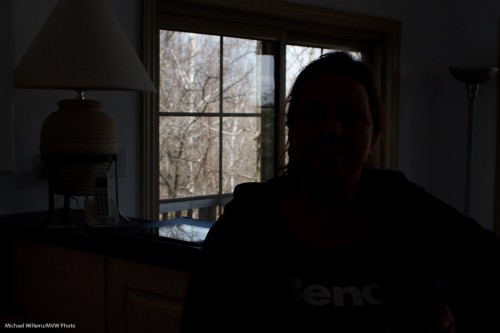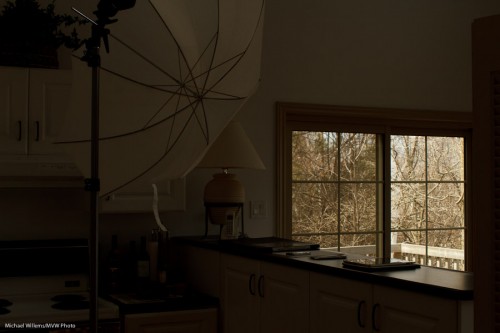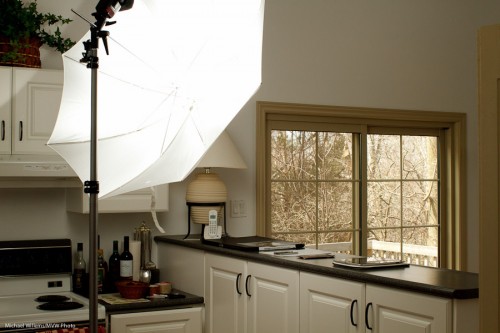You have heard me say it many times: “bright pixels are sharp pixels”.
Let’s say you want a picture of a lady. Just let’s say that.
So then you put a lady by the counter. Because there’s a bright background behind her, and you know your camera, you use Exposure Compensation to avoid her turning into a silhouette. I used a Canon 7D with a 35mm prime lens. And hey presto, here’s the snap – and that is all it is, a snap:
The background is now too bright, and the person is “dark pixels”, meaning the picture misses that crisp sharpness you were after.
So now let’s take it in steps.
First, decrease the exposure to get the background right. Use manual, or use exposure compensation (minus!). In my case, it was manual exposure mode, 200 ISO, and 1/200th second at f/8, which gave me this (and that should not be a surprise to those of you who know the “sunny sixteen rule”):
Better – for the background. Now we have a nice dark background, and we can see the trees, and so on.
Now the next step: to light up the foreground!
Flash is evidently called for. So I used a light stand with a flash-and-umbrella mount on top, with a simple 430EX flash on it, shooting through an umbrella:
Now I do the following:
- I set the flash to “slave” mode (“remote” on Nikon”)
- If I have a 7D, or a 60D, or a Nikon, I use the popup flash to fire that remote flash in TTL mode. If I have another Canon, I use a 580EX on my camera to fire the remote flash.
- In both cases, I ensure that the on-camera flash (popup or 580) is disabled, other than sending commands.
- Since the background is white, and I am using TTL rather than manual flash, I use flash compensation, +2/3 stops.
- I set my White Balance to “flash”.
And now when I fire, the umbrella lights up:
Which, finally, once we ask the lady to stand by the counter again, leads to this shot:
(Thanks for being the patient model, Lita!)
I have now achieved what I wanted: Lita is “bright pixels”, and the background is nice and colourful. Other than explaining, this all took just a few seconds, of course.





